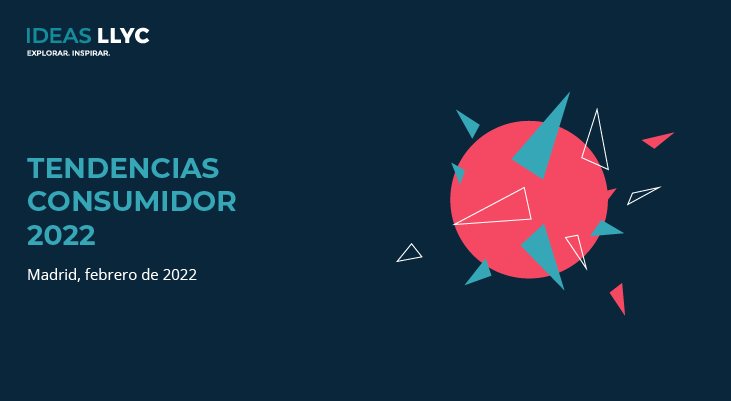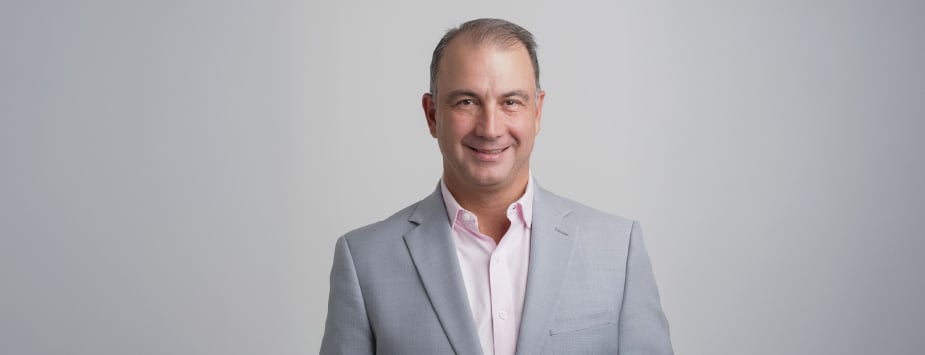The pandemic has stamped clear changes on relations between brands and consumers. In general, we have become more demanding and skeptical of what they propose. This is one of the conclusions deduced from the Consumer Trends 2022 report, prepared by the Consumer Engagement department at LLYC. The document identifies the 10 most important trends over the coming months based on the analysis of social conversation in the 12 countries where the consultancy firm has a presence. In total, thanks to its deep learning capabilities, more than 31 million tweets have been interpreted from almost 8 million profiles and 50 global companies.
Based on this complete information, we have extracted, for example, that the emotional impact that COVID-19 has left on the consumer translates into an increase in incredulity regarding the discourse of purpose, in the search for brands that enhance happiness and comfort, and also in a criticism of toxic positivism. This stamp left by the pandemic also translates into a tangible relationship with brands, with the focus on incentivizing security (the food barrier, the new era of packaging and transhumanist consumers). Furthermore, the transformation of channels and formats, beyond the omnipresent metaverse, means that the ‘when’ now prevails over the ‘where’ when shopping and the unstoppable rise of memes as language.
David González Natal, Partner and head of the Engagement department at LLYC stresses that “in this new annual edition of our consumer trends report, we have sought to take an additional step in research, combining the qualitative analysis of macro trends with our deep learning capabilities and our trend spotting methodology to detect trends and thus offer an even truer image of the main transformations over the coming months. We have thus discovered trends in acceleration that reflect the emotional impact of the pandemic, both at the level of a relationship with growing demands on brands and the tangible nature of their products and services”.
These are the 10 trends that will characterize consumption over the coming months and that represent a great opportunity for brands to find a differentiating potential in each of them vis-à-vis their clients and competition:
Made in happiness: As a result of the pandemic, the desire to celebrate moments of comforting “micro-happiness”, albeit fleetingly, has intensified. We seek to escape the uncertain and stressful reality. Some firms start from a certain vantage point here. Their products and services are related to indulgence, pleasure or wellbeing, but this does not mean that others are at a complete loss. Working on creativity and personalization is key to achieving this goal.
Toxic positivism: The last two years have undoubtedly revolutionized the way we conduct relations. We are now also swayed by the contagion of digital emotions. Following the anxiety and fear of the pandemic, the tsunami of extreme positivism has now arrived. Should we sign up to it? This is not obligatory. It is a question of normalizing the most negative impressions and acknowledging that something constructive may come out of a bad situation.
Meme everything: The power and universal vocation of memes is such that social media marketing strategies have tuned this powerful tool into an effective channel to connect with their audiences. When they are well used, they can significantly increase their engagement. Despite their growth and high level of conversation, brands can measure their use of them well and analyze in advance whether they connect with their identity and clients.
The food barrier: Nowadays, we are more aware of the importance food has for wellbeing, mental health and stability, happiness, a social balance and environmental awareness. This is no longer a trend, but a reality. We live in a new era in which self-care and the commitment of consumers to the planet will condition and drive the food industry toward new paths beyond mere satisfaction and the pleasure of eating.
When and not where: We have now moved from ease and accessibility when shopping to immediacy. The “now” and the “right now” have become hard currency whereby many brands have found a way to differentiate, with consumers that are increasingly more anxious and demanding with their time. We now prefer to shop quickly in physical stores nearby or through retailers and stores that guarantee same-day delivery.
New codes for old brands: The brand loyalty that was expected in the past has been replaced by the need for a unique shopping experience. Younger people are particularly motivated for this to be as personalized as possible in the offer. The figures show that consumers wish to be increasingly more reflected in brand communication, which also influences their shopping decisions.
Transhumanist consumers: People are increasingly more interested in understanding how technology is the path to bringing an end to physical limitations. Progress in recent decades and the acceleration of digitalization during the pandemic are making our in situ world increasingly more limited while our virtual world is extending to allow people to assimilate the possibility of depending less on the physical body.
Boomers go digital: 80% of adult consumers with Internet access in Europe have used digital channels in the last six months. Baby boomers feel that the social media have had a positive effect on their lives, surprisingly at levels close to those recorded by younger age groups. Brands must take this generation into account when creating virtual shopping experiences, platforms and communications.
Purpose/skeptics: Why are consumers so skeptical when most brands are working on their purpose now more than ever? Because brands are pushing to one side the short-term benefit for the client. More than empty words about responsibility and grand ambitions, people simply want the purpose to be reflected in practice and to have an impact on their lives or on their environment.
The new era of packaging: Product labels provide important information; they have become a key element of the shopping experience and decision making. Consumers now not only choose the products they buy for their use, price or quality, they want to see these products aligned with their values. Sustainability, local commerce, slow fashion and traceability are nowadays concepts that have gained importance when consuming.



